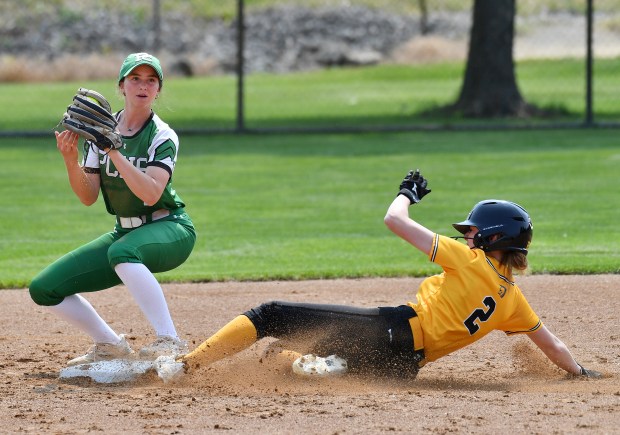Yes, I know I can head to the farmers market and pick up tomatoes for cheap.
I know I don’t have to spend my summer mornings watering, weeding and pep talking the plants in my backyard garden.
I know there is an easier way.
But there’s something sublime about bringing your own produce into the world, about using your own crops to create delicious sauces, soups and salads, about knowing you are one with nature.
I’ve maintained a backyard garden for more than 20 years. I’ve fended off invaders – a fence now keeps the rabbits at bay. I’ve brought out bedsheets and plastic covers when cold snaps come through. I’ve come up with creative ways to stabilize top heavy abundance.
And, I’ve beamed with pride when I harvested enough produce to stock the freezer and feed some of the neighbors.
There’s something enticing about trying to keep it together, which of course means, using detective (reporter?) skills to investigate when it all goes wrong.
I realized early on that the tomato plants were simply not growing the way they usually did. I asked around and others seemed to have similar issues.
By mid-July I was knee deep in theories: Climate change? Cicadas? Did my late-April “jump on the season” planting backfire?
Finally, this past week, I went to the experts.
I sent pictures to farmer Jeremy Mayne, of Mayneland Farm in Naperville. He suggested a rotation problem.
“Planting the same family veggies such as tomatoes/peppers/eggplant in the same spot yearly depletes the soil, even with fertilizer added,” he said.
I had indeed been rotating tomatoes and peppers but they are both in the same family. Mistake number one.
Mayne also suggested I test the soil.
I picked up a kit for $20 at a local big box store and very much enjoyed applying real science to the problem. The samples revealed that my soil was indeed alkaline, which is what tomatoes need. Hmmm.
Zack Grant, Cook County Food Systems/Small Farms educator with University of Illinois extension, to the rescue.
While Grant couldn’t provide a definitive answer without further testing, he hasn’t heard from commercial farmers of any adverse cicada effect.
Most likely, he said, mineral deficiency and inadequate watering are at the root of my problem. And it probably didn’t help that I started weeks before the recommended mid- to late-May planting time.
“Tomatoes and peppers are in the same crop family, so they’re essentially pulling nutrients out of the soil at pretty much the same rate,” he said.
“When a person puts in a garden initially, they typically experience pretty productive crops for several growing seasons,” he said. But growing the same type of crops, extracting the same nutrients from the same bed every single year and not really managing the fertility of the beds is likely causing “a nitrogen deficiency.”
I added several bags of mushroom compost and garden soil before planting but, he said, while it’s great to try to be sustainable and all organic, soil that has been overused typically needs inorganic fertilizers as well.
To be a commercial fertilizer, a product must have a nutrient analysis on the package.
Bags of compost do not have to meet this requirement because compost suppliers are not regulated by local, state or federal law.
“You don’t always know what you’re getting,” he said.
Commercial growers often buy compost from suppliers who participate in voluntary analysis programs, such as one directed by the U.S. Compost Council’s STA (or seal of tested assurance), he said. And they buy in bulk.
“For home growers, having 5 to 10 yards of compost delivered can be a little excessive,” he said.
Water management is also important, Grant said.
As a general rule, he said, plants need 1 inch of water per week. If your garden received ¼ inch of rain that week, do the math to figure out how much more it needs. About .623 gallons of water per square foot equals about an inch of rain per week, he said.
Dry spells and watering bans have to be taken into account, he added.
“If you have small beds, you certainly can hand-water. But if you have a decent sized garden, I recommend an irrigation system,” he said. But those can be complicated to set up.
A timer on your hose can tell you how much water is coming out per minute, he said.
Some people use soaker hoses, which can keep the soil more consistently moist, but they can be harder to control during dry spells, he said.
Blossom end rot, which is often mistakenly attributed to a calcium deficiency, is more of a water management problem, he said.
“You’re not consistently getting water to the end roots and calcium intake becomes a problem,” he explained.
The biggest mistake I made, it seems, was waiting too long to address the issue.
“Have a fertility backup plan,” Grant said. “And apply it when you first notice a problem.”
Within a few weeks of planting, he said, tomatoes should be greened up and starting to grow. If not, something is probably wrong.
Add compost for overall fertility, he said, but have some kind of supplemental nitrogen plan in place, too.
Tomatoes have a long season and use a lot of nitrogen over the season, he said.
“If you try to frontload all of that with just compost, you can get mixed results,” according to Grant.
Also, he added, don’t try too hard to have a garden that is completely sustainable.
“Strive for diversity. Compost mixed with a fertilizer plan is a good compromise,” he said.
While it’s great to try and mimic nature, the “culture” part of horticulture actually means human influence, he said.
A big part of gardening, he added, is embracing the mystery.
“If you like problem solving,” he said, “gardening is a good hobby to have.”
donnavickroy4@gmail.com
Donna Vickroy is an award-winning reporter, editor and columnist who worked for the Daily Southtown for 38 years.





